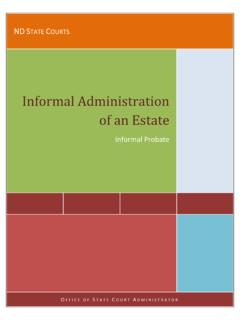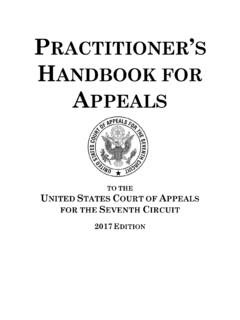Transcription of CONSTITUTION OF ZIMBABWE - Africanherd
1 _____. CONSTITUTION OF ZIMBABWE . (FINAL DRAFT : JANUARY 2013). _____.. CONSTITUTION OF ZIMBABWE . _____. ARRANGEMENT OF SECTIONS. Preamble. CHAPTER 1. FOUNDING PROVISIONS. Section 1. The Republic. 2. Supremacy of CONSTITUTION . 3. Founding values and principles. 4. National Flag, National Anthem, Public Seal and Coat of Arms. 5. Tiers of government. 6. Languages. 7. Promotion of public awareness of CONSTITUTION . CHAPTER 2. NATIONAL OBJECTIVES. 8. Objectives to guide State and all institutions and agencies of Government. 9. Good governance. 10. National unity, peace and stability. 11. Fostering of fundamental rights and freedoms. 12. Foreign policy. 13. National development. 14. Empowerment and employment creation. 15. Food security. 16. Culture. 17. Gender balance. 18. Fair regional representation. 19. Children. 20. Youths. 21. Elderly persons.
2 22. Persons with disabilities. 23. Veterans of the liberation struggle. 24. Work and labour relations. 4. 25. Protection of the family. 26. Marriage. 27. Education. 28. Shelter. 29. Health services. 30. Social welfare. 31. Legal aid. 32. Sporting and recreational facilities. 33. Preservation of traditional knowledge. 34. Domestication of international instruments. CHAPTER 3. CITIZENSHIP. 35. Zimbabwean citizenship. 36. Citizenship by birth. 37. Citizenship by descent. 38. Citizenship by registration. 39. Revocation of citizenship. 40. Retention of citizenship despite marriage or dissolution of marriage. 41. Citizenship and Immigration Board. 42. Powers of Parliament in regard to citizenship. 43. Continuation and restoration of previous citizenship. CHAPTER 4. DECLARATION OF RIGHTS. PART 1. APPLICATION AND INTERPRETATION OF CHAPTER 4. 44.
3 Duty to respect fundamental human rights and freedoms. 45. Application of Chapter 4. 46. Interpretation of Chapter 4. 47. Chapter 4 does not preclude existence of other rights. PART 2. FUNDAMENTAL HUMAN RIGHTS AND FREEDOMS. 48. Right to life. 49. Right to personal liberty. 5. 50. Rights of arrested and detained persons. 51. Right to human dignity. 52. Right to personal security. 53. Freedom from torture or cruel, inhuman or degrading treatment or punishment. 54. Freedom from slavery or servitude 55. Freedom from forced or compulsory labour. 56. Equality and non-discrimination. 57. Right to privacy. 58. Freedom of assembly and association. 59. Freedom to demonstrate and petition. 60. Freedom of conscience. 61. Freedom of expression and freedom of the media. 62. Access to information. 63. Language and culture. 64. Freedom of profession, trade or occupation.
4 65. Labour rights. 66. Freedom of movement and residence. 67. Political rights. 68. Right to administrative justice. 69. Right to a fair hearing. 70. Rights of accused persons. 71. Property rights. 72. Rights to agricultural land. 73. Environmental rights. 74. Freedom from arbitrary eviction. 75. Right to education. 76. Right to health care. 77. Right to food and water. 78. Marriage rights. PART 3. ELABORATION OF CERTAIN RIGHTS. 79. Application of Part 3. 80. Rights of women. 81. Rights of children. 82. Rights of the elderly. 83. Rights of persons with disabilities. 6. 84. Rights of veterans of the liberation struggle. PART 4. ENFORCEMENT OF FUNDAMENTAL HUMAN RIGHTS AND FREEDOMS. 85. Enforcement of fundamental human rights and freedoms. PART 5. LIMITATION OF FUNDAMENTAL HUMAN RIGHTS AND FREEDOMS. 86. Limitation of rights and freedoms. 87.
5 Limitations during public emergency. CHAPTER 5. THE EXECUTIVE. PART 1. EXECUTIVE AUTHORITY. 88. Executive authority. PART 2. THE PRESIDENT AND VICE-PRESIDENTS. 89. The President. 90. Duties of President. 91. Qualifications for election as President and Vice-President. 92. Election of President and Vice-Presidents. 93. Challenge to presidential election. 94. Assumption of office by President and Vice-Presidents. 95. Term of office of President and Vice-Presidents. 96. Resignation of President or Vice-President. 97. Removal of President or Vice-President from office. 98. Presidential immunity. 99. Functions of Vice-Presidents 100. Acting President. 101. Succession in event of death, resignation or incapacity of President or Vice-President. 102. Remuneration of President and Vice-Presidents. 103. President and Vice-Presidents and former office-holders not to hold other office or employment.
6 7. PART 3. MINISTERS, DEPUTY MINISTERS AND CABINET. 104. Appointment of Ministers and Deputy Ministers. 105. Cabinet. 106. Conduct of Vice-Presidents, Ministers and Deputy Ministers. 107. Accountability of Vice-Presidents, Ministers and Deputy Ministers. 108. Tenure of office of Ministers and Deputy Ministers. 109. Vote of no confidence in Government. PART 4. EXECUTIVE FUNCTIONS. 110. Executive functions of President and Cabinet. 111. War and peace. 112. Power of mercy. 113. States of public emergency. PART 5. ATTORNEY-GENERAL. 114. Attorney-General. 115. Removal from office of Attorney-General. CHAPTER 6. THE LEGISLATURE. PART 1. LEGISLATIVE AUTHORITY. 116. The Legislature. 117. Nature and extent of legislative authority. PART 2. NATURE AND ROLE OF PARLIAMENT. 118. Parliament. 119. Role of Parliament. 8. PART 3. THE SENATE. 120. Composition of Senate.
7 121. Qualifications and disqualifications for election as Senator. 122. President of Senate. 123. Deputy President of Senate. PART 4. THE NATIONAL ASSEMBLY. 124. Composition of National Assembly. 125. Qualifications and disqualifications for election to National Assembly. 126. Speaker of National Assembly. 127. Deputy Speaker of National Assembly. PART 5. TENURE OF MEMBERS OF PARLIAMENT. 128. Oath of Member of Parliament. 129. Tenure of seat of Member of Parliament. PART 6. LEGISLATIVE AND OTHER POWERS. 130. Powers and functions of Senate and National Assembly. 131. Acts of Parliament and procedure for their enactment. 132. Commencement of Acts of Parliament. 133. Enrolment of Acts of Parliament. 134. Subsidiary legislation. PART 7. PROCEDURE IN PARLIAMENT. 135. Head of Parliament. 136. Persons presiding in Parliament. 137. Quorum in Parliament.
8 138. Voting and right of audience in Parliament. 139. Standing Orders. 140. Presidential addresses and messages to Parliament. 141. Public access to and involvement in Parliament. 142. Validity of proceedings in Parliament. 9. PART 8. DURATION, DISSOLUTION AND SITTINGS OF PARLIAMENT. 143. Duration and dissolution of Parliament. 144. General election resulting from dissolution of Parliament. 145. First sitting of Parliament following general election. 146. Sittings and recess periods. 147. Lapsing of Bills, motions, petitions and other business on dissolution of Parliament. PART 9. GENERAL MATTERS RELATING TO PARLIAMENT. 148. Privileges and immunities of Parliament. 149. Right to petition Parliament. 150. Venue of Parliament. 151. Committee on Standing Rules and Orders. 152. Parliamentary Legal Committee. 153. Remuneration of President of Senate, Speaker and Members of Parliament.
9 154. Clerk of Parliament and other staff. CHAPTER 7. ELECTIONS. PART 1. ELECTORAL SYSTEMS AND PROCESSES. 155. Principles of electoral system. 156. Conduct of elections and referendums. 157. Electoral Law. PART 2. TIMING OF ELECTIONS. 158. Timing of elections. 159. Filling of electoral vacancies. PART 3. DELIMITATION OF ELECTORAL BOUNDARIES. 160. Number of constituencies and wards. 161. Delimitation of electoral boundaries. 10. CHAPTER 8. THE JUDICIARY AND THE COURTS. PART 1. THE COURT SYSTEM. 162. Judicial authority. 163. The judiciary. 164. Independence of judiciary. 165. Principles guiding judiciary. 166. Constitutional Court. 167. Jurisdiction of Constitutional Court. 168. Supreme Court. 169. Jurisdiction of Supreme Court. 170. High Court. 171. Jurisdiction of High Court. 172. Labour Court. 173. Administrative Court. 174. Other courts and tribunals.
10 175. Powers of courts in constitutional matters. 176. Inherent powers of Constitutional Court, Supreme Court and High Court. PART 2. APPOINTMENT AND TENURE OF MEMBERS OF JUDICIARY. 177. Qualifications of judges of Constitutional Court. 178. Qualifications of judges of Supreme Court. 179. Qualifications of judges of High Court, Labour Court and Administrative Court. 180. Appointment of judges. 181. Acting judicial appointments. 182. Appointment of magistrates and other members of judiciary. 183. Judicial officers not to be appointed to more than one court. 184. Judicial appointments to reflect society. 185. Oath of office. 186. Tenure of office of judges. 187. Removal of judges from office. 188. Conditions of service and tenure of members of judiciary. 11. PART 3. JUDICIAL SERVICE COMMISSION. 189. Establishment and composition of Judicial Service Commission.







